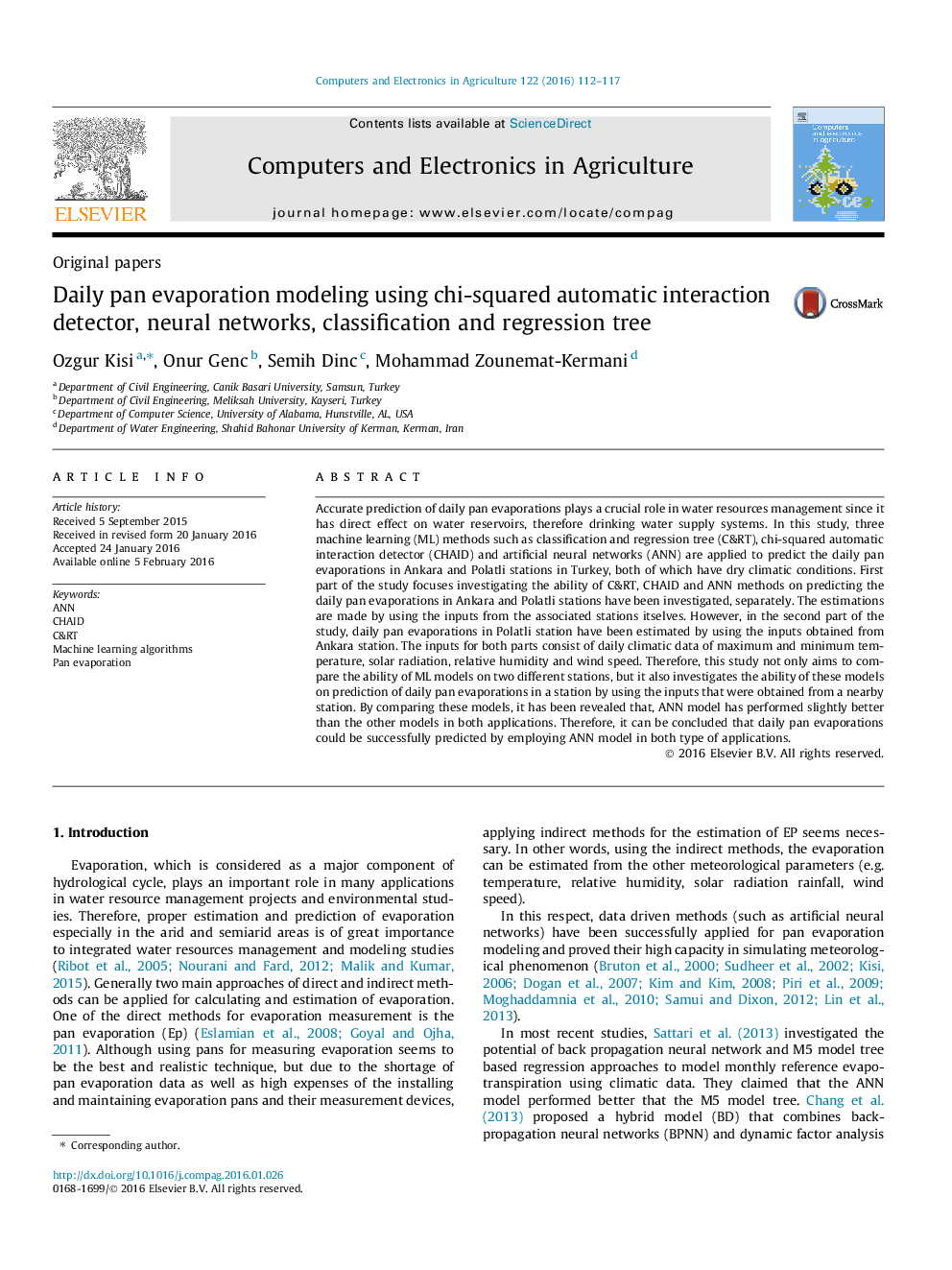| کد مقاله | کد نشریه | سال انتشار | مقاله انگلیسی | نسخه تمام متن |
|---|---|---|---|---|
| 84041 | 158858 | 2016 | 6 صفحه PDF | دانلود رایگان |
• Different data-driven methods are compared in predicting daily pan evaporations (Ep).
• Climatic data from two stations are used as inputs to the models.
• The cross station application is also provided in the second part of the study.
• The ANN models slightly perform better than the C&RT and CHAID in estimating Ep without local climatic inputs.
Accurate prediction of daily pan evaporations plays a crucial role in water resources management since it has direct effect on water reservoirs, therefore drinking water supply systems. In this study, three machine learning (ML) methods such as classification and regression tree (C&RT), chi-squared automatic interaction detector (CHAID) and artificial neural networks (ANN) are applied to predict the daily pan evaporations in Ankara and Polatli stations in Turkey, both of which have dry climatic conditions. First part of the study focuses investigating the ability of C&RT, CHAID and ANN methods on predicting the daily pan evaporations in Ankara and Polatli stations have been investigated, separately. The estimations are made by using the inputs from the associated stations itselves. However, in the second part of the study, daily pan evaporations in Polatli station have been estimated by using the inputs obtained from Ankara station. The inputs for both parts consist of daily climatic data of maximum and minimum temperature, solar radiation, relative humidity and wind speed. Therefore, this study not only aims to compare the ability of ML models on two different stations, but it also investigates the ability of these models on prediction of daily pan evaporations in a station by using the inputs that were obtained from a nearby station. By comparing these models, it has been revealed that, ANN model has performed slightly better than the other models in both applications. Therefore, it can be concluded that daily pan evaporations could be successfully predicted by employing ANN model in both type of applications.
Journal: Computers and Electronics in Agriculture - Volume 122, March 2016, Pages 112–117
